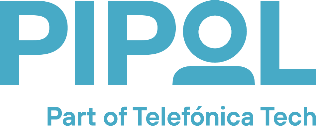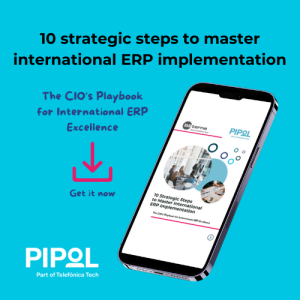International Business Process Optimization
Part 4: A 12 Country Business Transformation and International ERP Challenge…
Now as we start to put together an overarching plan, we need to come back to the key points from the Readiness Workshop we did with KRONOS. It revealed some statements which, we expect from a senior management team.
- There is a realistic budget and time frame for the project
- Sufficient funds are available
- There is a clear vision and a realistic goal for the project
Then there are those findings that indicate the huge amount of work and effort that the organization must put into the project to meet those original objectives – “we want to work as one company, reorganize and develop synergies between our different subsidiaries, improve our competitiveness and be much more agile and efficient than we have been so far”. Pipol has set about capturing where KRONOS are, pitching to where they want to be and understanding the transition.
Coming up we will let you in on how Pipol goes about an International Business Process Optimization, as needed in the KRONOS case
The first thing to realize is that making statements, such as the senior management has, they are recognizing both the opportunity for business improvement as well as the need for change. The first part of transition management (TM) is identifying the changes needed.
One of Pipol’s senior TM practitioners was therefore assigned to KRONOS. His first task was to prepare the TM Roadmap. His interest was mainly in the remaining readiness findings and he started to structure his ideas:
- There are substantial business process optimization potentials not yet explored
Great to know. I suppose this was all part of the merger justification. Where are these optimization opportunities? I know they were written down as part of the Readiness Report. Are they just high-level or are they fully validated? I wonder who the key players are across the organisation, who will know?
- That no internal alignment of business processes has taken place
This is hardly surprising. A US centric company merging with a German company with external subsidiaries, how was that going to be aligned already? USA, Germany, Poland and China as well as sales in multiple European countries. This is going to be interesting and will take some working through!
- That the project is well accepted at HQ but not communicated, discussed or aligned outside HQ
OK, but I want to know what HQ thinks is “the project”. Has there been any communication? I need to find out a lot more about the company cultures and what level of centralized design, control and communication is envisaged. We need to start communicating fast before the rumor mill takes over!
- Key team members from KRONOS must be identified and released for the project
Good to be able to guide from the start. I am not sure that the KRONOS Senior team will know how best to create a team who can identify, plan and facilitate the many changes that will be identified across the new KRONOS organisation. We will certainly need a good mix of skills and experience, as well as a lot of energy & commitment! Sometimes the best people are not always the most obvious.
The first step in a business process optimization plan is to identify the key business processes, their owners and where “best-practice” exists
Using the readiness report, the Pipol TM practitioner decided to arrange telephone interviews with the US Finance VP and Operations VP and then a follow up call with the companies president. He wanted to make sure, what their expectations were and aligned on future TM steps. He also wanted “permission” to contact the senior players in the new organisations abroad, to verify their understanding and hear their views and concerns.
2 weeks later the Pipol TM practitioner had completed his calls and was preparing for the first, Business Process Optimization Workshop called “Mapping the current state”. This was going to be difficult, because he had already observed that there were at least 3 current states in the operations part of KRONOS. He was content that he had a good process with the representatives from US, Germany & China, but there were still many processes and sub-processes to identify and discuss.
The Finance part looked easier and would be based around a new Global Chart of Accounts. He had asked the US based Operations VP, if he could provide an energetic TM Facilitator to assist and work alongside throughout the project? They also needed to find a similar individual in the European organisation. Perhaps the best way to find the right person, would be to wait until the workshops started and then the need would become obvious to all.
Pipol’s TM practitioner summarized the situation in a one-page overview and emailed to it to key stakeholders asking for their attendance and support for a week of business process mapping workshop in New York in 3 weeks’ time.
We will follow up on how the business mapping workshop went, in the beginning of 2017.
Key takeaways:
- The first part of transition management (TM) is identifying the changes needed in the organization
- The first step in a business process optimization plan is to identify the key business processes, their owners and where “best-practice” exists
- Sometimes the best people are not always the most obvious
Check out the four other parts of this international ERP case story:
- Part 1: A 12 Country Business Transformation and International ERP Challenge
- Part 2: Dealing with Transition Management In Multi-Country ERP Deployment
- Part 3: Leadership Alignment in a Multi-Cultural Organization While Deploying ERP
- Part 4: International Business Process Optimization (this)
- Part 5: ERP Roadmap for an International Business Process Optimization





